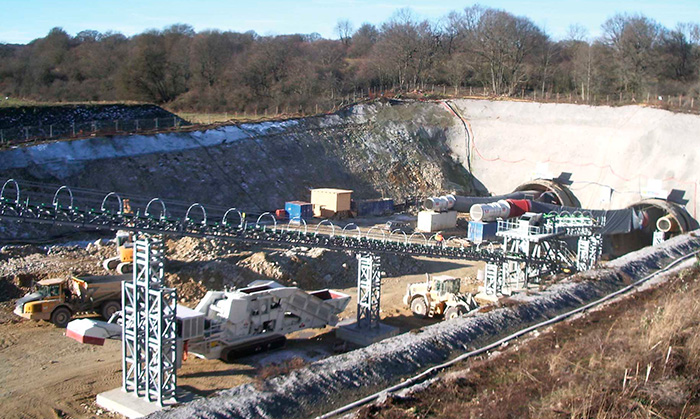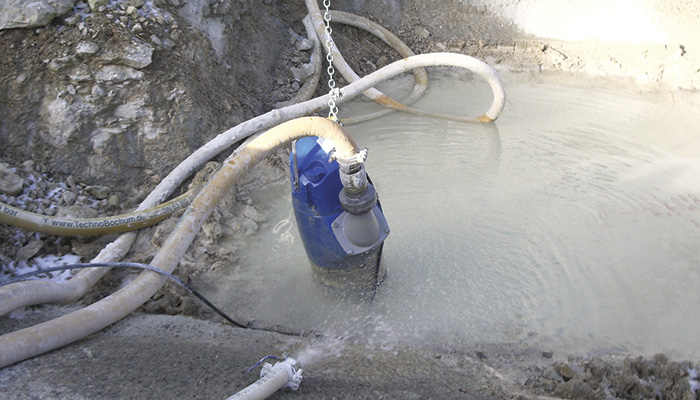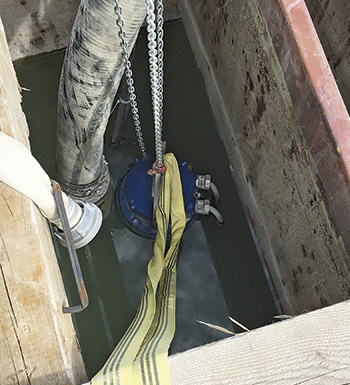Large civil engineering and construction projects are often complex, but a job can be even more challenging when it involves digging 19 miles (30 kilometers [km]) of tunnels and installing high-speed rail lines. The concept of this project, known as Stuttgart 21, was to replace the existing railway terminal station with a high-capacity underground through-station that would join plans for a high-speed link to other European cities.
The main construction work on Stuttgart 21 began in 2010 and is expected to continue beyond 2023. The finished project will join the 1,500-km “Magistrale for Europe” high-speed line connecting Paris, Strasbourg, Stuttgart, Ulm, Munich, Vienna, Bratislava and Budapest.
 Image 1. Nine tunneling sites are operational around-the-clock. (Image courtesy of Sulzer)
Image 1. Nine tunneling sites are operational around-the-clock. (Image courtesy of Sulzer)The project has generated controversy with debates on issues including costs, benefits, geological and environmental concerns, as well as performance matters. These concerns have resulted in an unexpected delay of more than two and a half years, placing greater time pressures on companies involved in creating the tunnels.
Construction projects of this type, especially in a region with a high groundwater level, present more challenges than a conventional overland project. Any plans for a tunnel must involve a provision for pumps to remove groundwater, and a project of this scale requires an extraordinary level of service to keep it operational.
For the Stuttgart project, about 90 percent of the deep excavation work is presently taking place around the city center, where a series of hills and valleys hide some partly unstable geological conditions that include mineral-water springs. The natural topography and geological features pose a challenge to the project, especially with the added complication of unforeseen delays.
Once the project started, investigations determined water table levels and calculated the depth of strategically placed wells to reduce the water level. By removing groundwater, the soil and rock structure remained more stable, making tunneling easier and more efficient.
Project planners met with technical experts to determine the specification and quantity of pumps that would be required for the project’s duration. One of the key requirements was the need for 24-hour operation, which meant putting in place a responsive support structure that could deliver new pumps, spare parts and technical assistance within hours of a request.
The tunnel construction process began with the excavation of launch sites for the tunnel boring machines (TBMs) and for the start of the excavated tunnels (shotcrete-method). The submersible pumps in the wells surrounding the site need to maintain a water level below the floor of the launch pad, but additional pumps are used to remove surface and process water.
 Image 3. More than 200 submersible pumps have been supplied to date.
Image 3. More than 200 submersible pumps have been supplied to date.Simultaneous Construction
As the project has developed, nine tunneling sites have become operational, all working around-the-clock to create the underground links for the railway. To date, these sites have required more than 200 pumps to keep the water away from the engineers until the tunnel lining process has been completed.
The pumps vary in size from 2.0 to 56.0 kilowatts (kW), depending on the situation. The majority represent one company’s specific range that offers high energy efficiency as well as onboard level detection and data storage functions. The modular construction of the pumps simplifies maintenance and minimizes repair time, which lengthens the pumps’ operational time.
The provision of support for the pumps was a critical factor for the consortiums responsible for constructing the tunnels. A pump company involved demonstrated that it could deliver a wide range of pumps that had the capacity, reliability and efficiency required for the project.
 Image 4. Onboard level controls and data storage optimize performance.
Image 4. Onboard level controls and data storage optimize performance.High-efficiency pumps help to minimize running costs because of the reduced energy requirement. The pumps must be reliable when operating with dirty water, which can contain suspended solids and abrasive particles. High-efficiency pumps also help cut initial project expenses by minimizing cabling and transformer costs.
Dewatering applications can pose a challenge to pumping equipment, so responsive maintenance support is essential. The pump company involved in the project has a local service center that was stocked with the necessary modular spare parts as well as complete pumps that could be delivered within a few hours.
The majority of the on-site pumps are conventional submersibles, which are expected to remain operational throughout the tunnels’ construction. The project also required larger, multistage pumps for shorter periods of time. Rather than incurring the higher cost of purchasing these pumps, an arrangement was made for a part of the equipment to be rented to the construction consortium.
Construction projects on the scale of Stuttgart 21 require enormous levels of planning combined with expertise in a number of engineering fields. In order for progress to be efficient, the construction sites must be safe and, as much as possible, free from water.
Engaging a turnkey supplier that can provide technical expertise, a wide range of pumping assets, as well as 24-hour maintenance support can decrease concerns about the project’s dewatering aspect.


